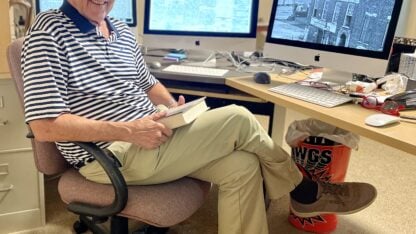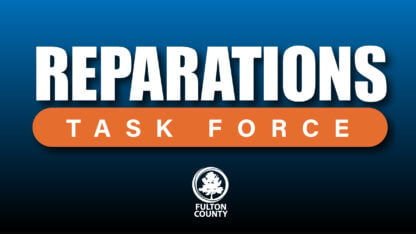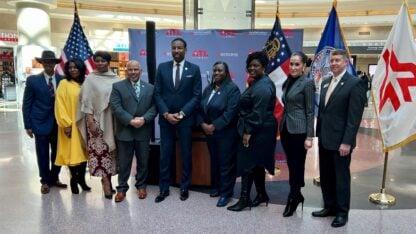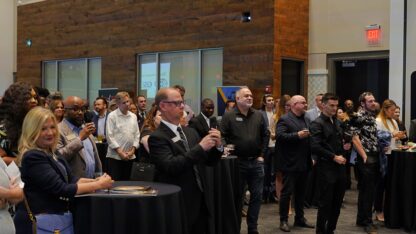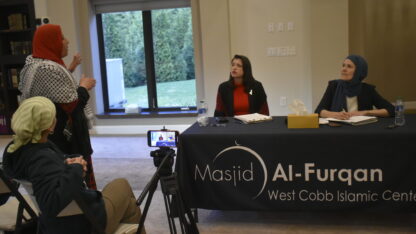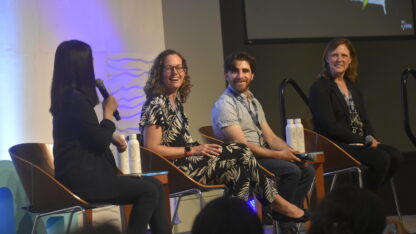Proposed changes to Stone Mountain Park released amid financial, societal pressure
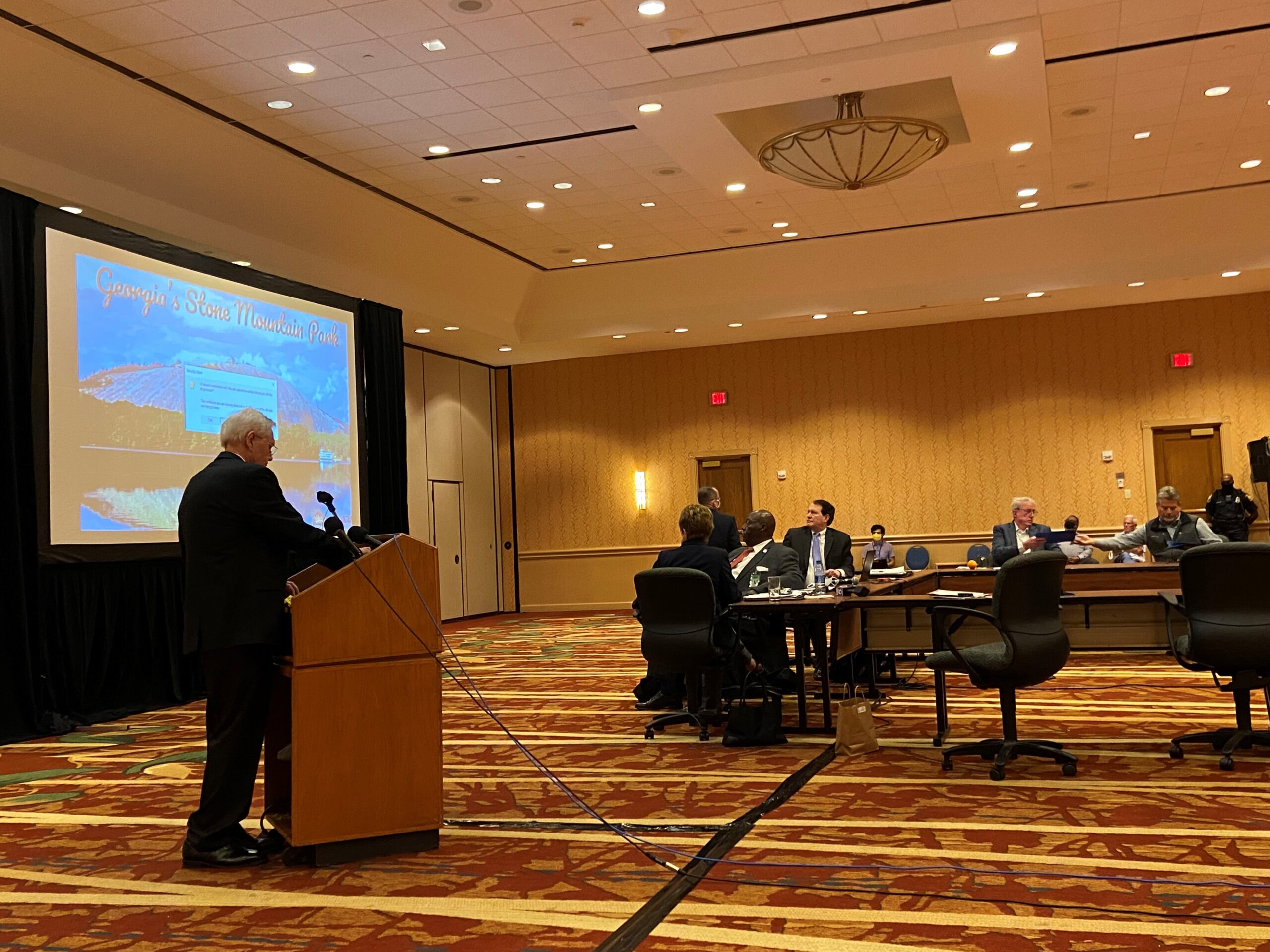
Stone Mountain Association CEO Bill Stephens presents his suggested changes to the park’s board Monday.
Emma Hurt / WABE
Under financial and societal pressure, Stone Mountain Park, home to the world’s largest Confederate monument, is considering making some changes.
Stone Mountain Memorial Association Chief Executive Bill Stephens gave an unprecedented presentation Monday, proposing new ideas to begin to grapple with some of the park’s Confederate history, which the state-appointed association board is set to vote on next month.
His presentation comes after a specific request from the board last year to explore these options.
“Economically, we can’t stay the way we are,” Stephens said. “Change is inevitable. We can either take charge of it, or we can be defined by it.”
The 3,200-acre park east of Atlanta has been struggling economically because of its image.
Revenues at the state’s most-visited attraction dropped by 56% in 2020 because of the “Confederate issue” and because of the coronavirus pandemic, Stephens reported.
The park’s hotel and management vendors are ending relationships with the park soon, and Stephens said they haven’t found anyone willing to bid on the contract “unless we take some action moving forward.”
While the park’s most prominent feature — its 3-acre carving of Confederate leaders on the mountain’s granite face — is explicitly protected by Georgia state law, Stephens proposed a new exhibit about the carving.
“Some people look at the carving and see heritage. Other people look at the carvings and see hate. But the truth of the matter is it’s very complex story. The Ku Klux Klan was involved in earlier years having to do with the carving,” he said. “So we’re here to tell that story.”
Stephens proposed moving an installation of Confederate flags off the popular trail up the mountain to a less prominent location in the park. He suggested removing the image of Confederate leaders from the park’s logo, renaming “Confederate Hall” and building a “Faith and Freedom Chapel” on top of the mountain.
“You can’t get there overnight,” said newly appointed association Chairman Abraham Mosley, the first Black person to hold the job, who supports the changes proposed.
“If you’re going to walk a mile, you’ve got to take that first step. So I think this is the first step to a lot of good things to come at Stone Mountain Park. It’s just gonna take time to get there.”
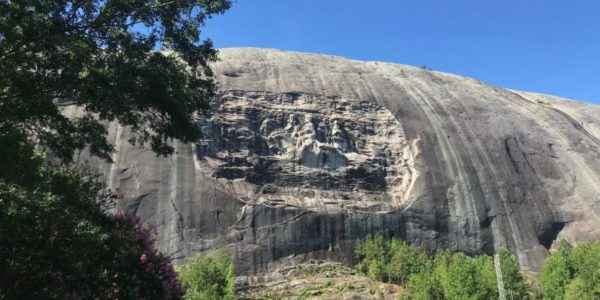
Mosley said he’s confident that if approved by the board in May, the changes will happen quickly.
“I think we’re out of that rut,” he said.
Public comment at the meeting reflected the ongoing sides of the debate over Stone Mountain: Both disapproval that the changes weren’t more dramatic and disapproval of the notion of lessening any Confederate history.
“I can tell you from my family’s history, and our legacy here in the state of Georgia, bigger changes need to be made,” said Bona Allen, a Confederate descendent with the grassroots group Stone Mountain Action Coalition. “You, this board have a responsibility to the citizens of the state of Georgia, all the citizens of Georgia to do what is right.”
Teresa Hardy, president of the DeKalb County NAACP, is pushing for resculpting the carving and removal of all Confederate references.
“There’s an expression that says, ‘If people knew better, they would do better.’ It is obvious to every American today, who wishes to face the truth, that the Lost Cause myth created and perpetrated by the United Daughters of the Confederacy is a lie,” she said.
Timothy Pilgrim, a representative from the Sons of Confederate Veterans, presented his group’s alternative plan for the park, leaning into its Confederate history by “implementing living history attractions” of the “antebellum South,” including Confederate soldiers and period characters.
He also warned against changes that violate the laws protecting the park.
“Any changes that are not in accordance with the park’s statutory mandates as a memorial to the Confederacy is not going to fare well with the citizens of Georgia,” Pilgrim said.
“There is nothing we can do to make everybody happy,” Stephens acknowledged.
“Some on one side are going to say, ‘You didn’t go far enough.’ People on the other side are gonna say, ‘You went too far.’ But the truth of the matter is we’re attempting to occupy a reasonable, commonsense middle ground, which recognizes both history and heritage.”
